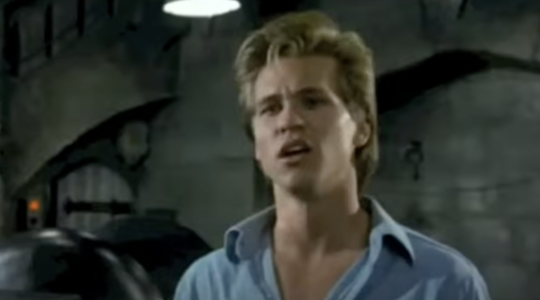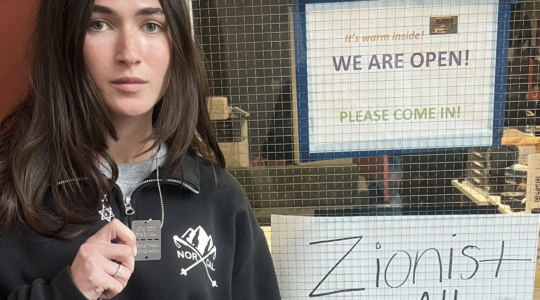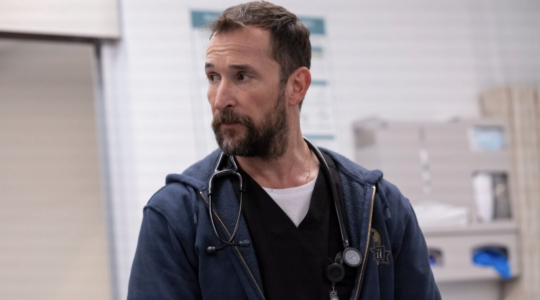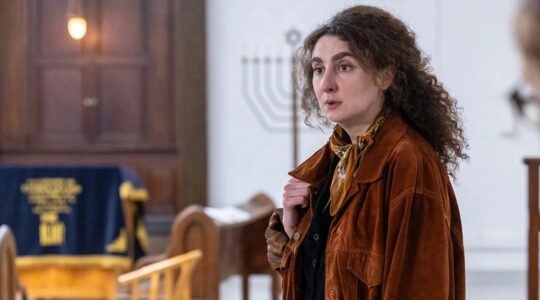
Rabbi Menachem Mendel Schneerson, Chabad’s last rebbe, died on June 12, 1994 and is still highly revered in the community. (Wikimedia Commons)
It has been two decades since the death of Rabbi Menachem Mendel Schneerson, the Hasidic rebbe whose influence was felt far beyond the Chabad-Lubavitch movement he led.
Within hours after the long-ailing Schneerson, more commonly known as “the Rebbe,” died at age 92, JTA reporters visited Crown Heights, the Brooklyn neighborhood where Chabad is based, to report on the scene there:
All along Eastern Parkway, Crown Heights’ main drag and the site of Chabad headquarters, “the sound of tambourines and chants of ‘Melech ha-Moshiach” — the Chasidic movement’s call for the biblically prophesied Messiah — could be heard.”
Meanwhile, in Israel:
Crowds of Lubavitcher Chasidim mobbed Ben-Gurion International Airport, offering to pay cash for any ticket that might get them to the funeral.
El Al Israel Airlines scheduled an extra flight on a jumbo jet for some 450 of the rebbe’s followers. But neither El Al nor any of the foreign airlines that serve Israel had other craft they could divert for the thousands who thronged into the departure area.
While attendance at the burial, in a Queens cemetery, was restricted, JTA described the “emotional scene earlier in Crown Heights” as an estimated 35,000 people gathered “under overcast skies” outside Lubavitch headquarters in hopes of catching a glimpse of Schneerson’s coffin:
When the plain pine coffin appeared, the scene became one of emotional mayhem, with women wailing and men pressing forward to touch it.
The 350 police who were on the scene could barely contain the surging crowds, and the pallbearers had difficulty getting the coffin into a waiting hearse.
Despite the sudden rush to the coffin from the sea of black-hatted mourners, no injuries were reported.
The crowds walked behind the slowly moving vehicle, which led them on a processional through the Crown Heights neighborhood.
Some 50 buses were waiting to take some of the rebbe’s followers to the cemetery after the procession was over.
Among the dignitaries present at Lubavitch headquarters were New York Mayor Rudolph Giuliani; Benjamin Netanyahu, leader of Israel’s opposition Likud bloc; Gad Yaacobi, Israel’s ambassador to the United Nations; Colette Avital, Israeli consul general in New York; and Lester Pollack and Malcolm Hoenlein, the chairman and executive vice chairman respectively of the Conference of Presidents of Major American Jewish Organizations.
In the days that followed, JTA pointed to the many questions swirling about: Who would succeed the childless Schneerson as leader of the movement? Would a schism emerge between Chabad Hasidim who believed Schneerson was the Messiah, and those who did not? Would the movement be able to continue its rapid international growth without the Rebbe?
A year later, as Schneerson’s first yahrtzeit approached, some answers had emerged. Rabbi Yehuda Krinsky, the Rebbe’s aide for decades and the executor of his estate, had assumed responsibility for day-to-day operations. And rather than letting its activities and influence abate, in the absence of the Rebbe, Chabad had redoubled its efforts, adding 100 new couples to the movement’s more than 3,000 emissaries in “locations as disparate as Vilna, Lithuania; Marumbi, Brazil; and New London, Conn.”
In addition, JTA reported, “roughly $200 million worth of new capital projects have been initiated by Chabad emissaries all over the world,” including a planned $40 million synagogue and Jewish program campus in suburban Detroit and a $10 million complex in Paris. Chabad was also expanding its presence on the then-fledgling Internet, where it was setting up online chat rooms and study sessions.
In the 19 years that followed, Chabad never anointed a replacement rebbe. Yet its growth, both online and in the physical world, continues.
JTA has documented Jewish history in real-time for over a century. Keep our journalism strong by joining us in supporting independent, award-winning reporting.





